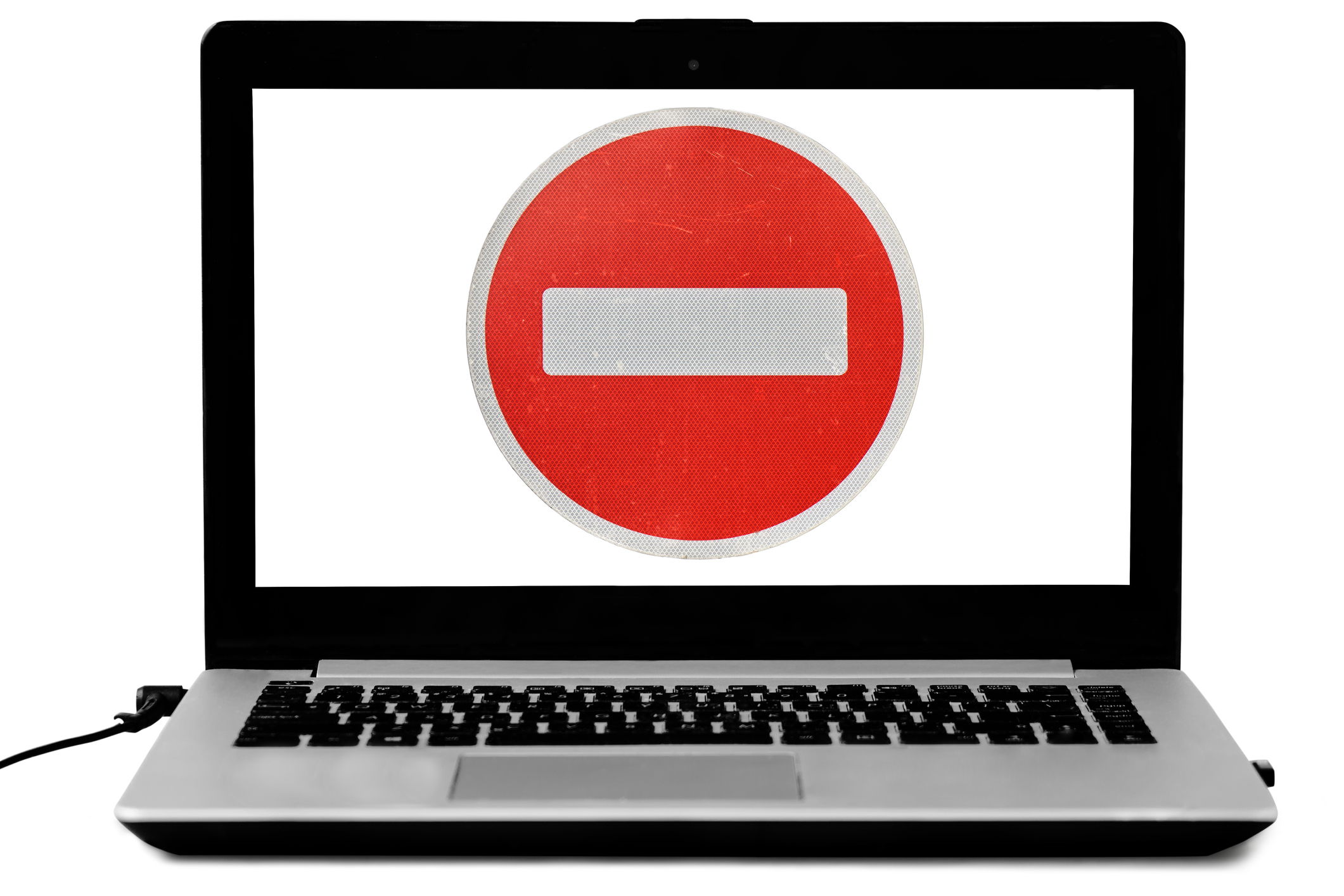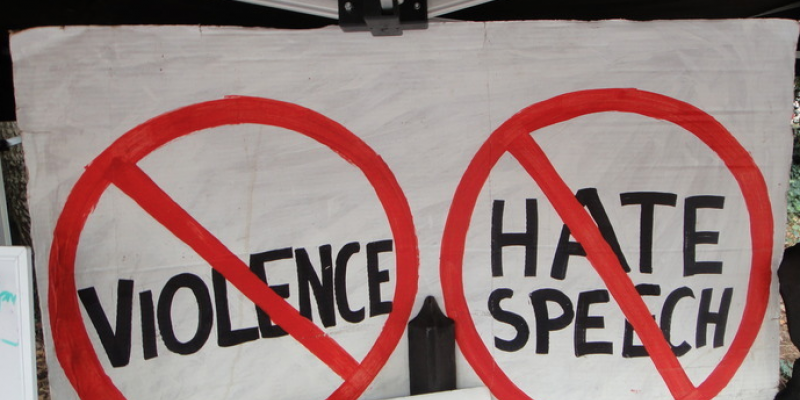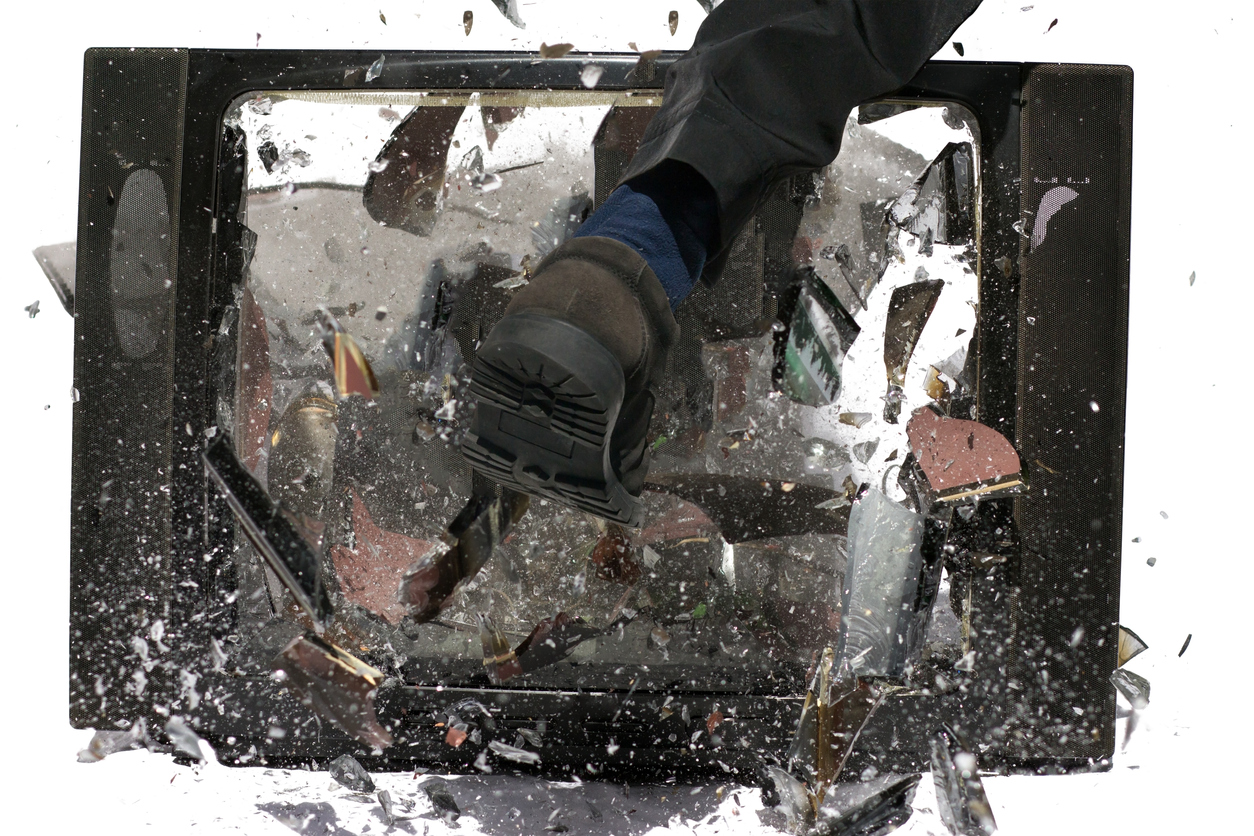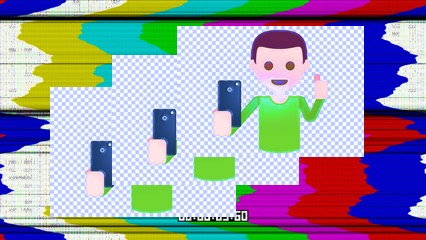A call to action.
Big Censor

There have always been fights over free speech—but this time it's different.
You would be hard-pressed to find a time in America’s history when free speech wasn’t hotly contested.
There is no end of examples: Patterson v. Colorado (1907), the Espionage Act, the Sedition Act, Schenk v. U.S. (1919), the 1938 ban on Life magazine, the Hays Commission, and the House Committee on Un-American activities—to say nothing of the virulent battles of the late ’80s and ’90s over everything from rap music, to pornography, from what can and can’t be said during live music events, to violence in video games, TV, magazines, and comic books. The specter of “You can’t say that” has haunted mass media since the invention of the printing press.
Yet, the texture of today’s media landscape feels less flexible.
The tropes of “wrongthink” and “thought police” have gone from ironic Reddit-isms to palpable cultural forces and persistent threats in everyone’s lives. A friend who’s a well-known author confides in me that she obsessively combs through old Facebook messages, asking herself, “Did I accidentally say something racist 10 years ago that might be used against me?”
Her published fiction, marketed toward young women, undergoes the same personal scrutiny and self-censorship. Then it goes through another round of interrogation from agents, editors, and publishing houses. This isn’t neurosis. It’s justified self-preservation on the part of everyone involved. It’s part of the work, just as debugging your code is part of being a software engineer. Word choice gone awry can mean cancelled book deals, ended careers. It’s a very tough time to create media for distribution.
But then I place this behavior in its wider historical context. We’d be remiss to forget obscenity law in the ’80s, ’90s, and early aughts, the myriad cases that went as far as the Supreme Court. Whyis this different? Whydid it feel like nineties television, a medium with so much corporate and in some cases even political gatekeeping, had more bandwidth for people to shock than media does today? Is this a trick that nostalgia’s playing on us?
Blurred Lines
Predictably, this has not been an easy question to answer.
One theory might be that the ‘90s felt freer precisely because we had less freedom. Or if not less freedom, then clearer and more distinct boundaries on a number of fronts.
There were clearer boundaries, for instance, between media and more powerful corporations, or even the government. Networks like MTV, Comedy Central, Cartoon Network, and Fox felt like underdogs, and perhaps they were. So while not every young animator with a dream could find his or her way onto Cartoon Network, there was still something about Cartoon Network that made it feel like it belonged “to the people.”
Media channels of every kind today, though, are simply too big. They are less aligned with the public, and when independent players emerge, they’re either quashed or driven underground. It makes one wonder what “independent media” looked like during the height of McCarthyism. Where do the blacklisted go when there is nowhere to go? Perhaps we are seeing an analogue of this today.
Now, with social media, TV technology has been democratized. So when censorship happens, it feels like it’s happening to us—because it is. The journalist is a media personality that you can easily reach via Twitter or email. Social media stars gain all sorts of real capital, both social and material, and it’s hard to distinguish who they are versus who they are online. There is no “I’m a doctor, I just play one on TV.” We are simultaneously playing a role and living our real lives, with no distinctions about which role belongs where.
Distinctions are collapsing so fast that we can’t establish a consensus about which TV-era analogy to apply to social media. Are TikTok and YouTube the 21st-century answers to public access? Are indie podcasts AM radio? Are either of these professional vehicles? Who is a creator and who is simply a user? Is everyone a creator, but some are just more successful than others?
If the answer to any of these questions is “no” that leaves us in a disorienting position. What’s going on now is unprecedented and therefore difficult to place in a recognizable context.
Nostagiaflix
An illuminating example of rebellion against our muddled media landscape is Netflix. Netflix tries to recreate the boundaries of old by packaging juicy but high-prestige narrative content like the professional art objects of yesteryear. Manufactured nostalgia has also become a hallmark of Netflix originals, perhaps also as a way to recreate a sense among the consumer that she is not also the product
Yet when we binge-watch these shows, something feels off. Type “Why does Netflix feel soulless?” into Google and you find that hundreds, if not thousands, of people are asking the same question. It’s not the professionalism or artifice that are throwing people off, either. Shows like Friends and Seinfeld, which both feature a laugh track, enjoy continued popularity on streaming services. It’s something about the shows themselves that feel disturbingly untethered in a way that Friends did not.
This disenchanted feeling might arise not from the shows so much as from their social context. We are living in an era of unprecedented choice, and that in itself might contribute to this sense that there is less room for deviation. Because we had a more unified social experience in the ‘90s, alternative culture stood out more strongly. Subcultures flourished—as did the channels that empowered them, from public access to Fox and MTV—because there was a more unified experience at large.
Shows like King of the Hill, The Simpsons, and South Park all aired against a mainstream understanding that some things were off-limits. Right now, the next taboo could drop any minute, even as others are zapped away. It’s not simply that you can’t make certain comments, it’s that we’re living in a 24-7 purity spiral and anything might be a ticking time bomb.
Cycle of Regimes
In 2021, despite corporate consolidation and the waning of high art, there’s still too much content. And outside of corporate, homogenized wokeness, which paints a veneer over everything institutional, there is no common ground. No common culture to rebel against: only faceless and ever-evolving restrictions.
Most liberal advocates of limiting free speech, because their form of repression is different from that of ’90s-era social conservatism, don’t recognize themselves as the repressors. But today’s liberals are both more repressive and more confusing than yesterday’s conservatives. There was a line to cross in 1998. The situation today is like telling people there’s a curfew, but then also not letting them have access to a clock. Where’s the line? Only the censor knows, but you better not cross it.
But then there’s a second, more optimistic explanation.
Maybe capitalism is stronger than it seems as a bulwark of freedom. It could be that enough of us will spiritually burn out on consuming “ethically” homogenized content and dissident thought will break through the cultural filters to a larger audience of willing ears.
Perhaps people will still be offended, but corporations will see this market, capitalize on it, and deliver readily accessible art, culture, and entertainment to audiences stronger than censors.
We just have to make sure that today’s corporate cartels and monopolies don’t crush them under their boot first.
Photo credit: Dzurag
The American Mind presents a range of perspectives. Views are writers’ own and do not necessarily represent those of The Claremont Institute.
The American Mind is a publication of the Claremont Institute, a non-profit 501(c)(3) organization, dedicated to restoring the principles of the American Founding to their rightful, preeminent authority in our national life. Interested in supporting our work? Gifts to the Claremont Institute are tax-deductible.



